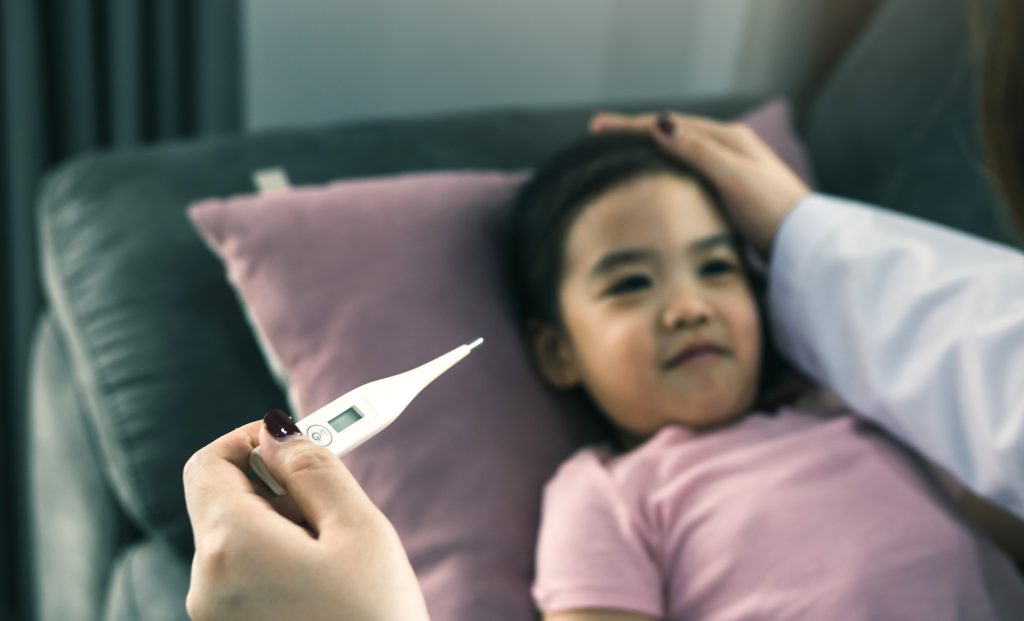A fever usually indicates that a baby is fighting off an infection. Parents and caregivers may worry when their children have a fever, but this is a sign of a robust immune system. Nevertheless, newborns have more vulnerable bodies, so that a fever can indicate a more severe infection.
This article discusses how to treat a baby with a fever and when a parent may need to take them to the doctor.
What is a fever?
A fever occurs when the body temperature reaches 38° C (100° F). An elevated body temperature is referred to as a fever. It is common to indicate an infection in your child, but other conditions can cause fever without infection. Fever is not associated with teething. If your child has a severe illness, they may have low temperatures rather than a fever.

How do you care for a baby who has a fever?
Monitor the temperature.
It would be best to consider your child’s age and comfort level when choosing a thermometer. Don’t forget to tell the doctor the kind of thermometer you used, the body part where it took, and the accurate reading.
Cold Compress.
By placing a cool, wet washcloth on your baby’s head, you can help ease their fever and get them to sleep.
Staying hydrated.
It is possible to become dehydrated when you have a fever. Breastfeeding mothers must ensure their children get enough liquids. Contact your health care provider if your child refuses to drink or shows symptoms of dehydration such as a dry mouth and lips, lack of tears, sunken eyes, and a general appearance of sickness.
Use medication.
Consider using fever-reducing medication such as the counter paracetamol. You should check the label or speak with your pediatrician to determine the proper dosage for your child. Children under age 18 are not to take aspirin.
Dress your child lightly.
It might be tempting to wrap him up when a child is sick, but this may only contribute to his discomfort. Dress the child comfortably (between 70 and 74 degrees F) by wearing light clothing. The forced sweating method is not the best way to treat fever.
Lukewarm Sponge Bath.
Your child should be bathed or washed in lukewarm water to reduce fever. Monitor their temperature within 30 minutes afterward. In the event that your child starts to shiver, stop the bath or washing process, dry and dress your child, then cover them with a dry sheet.
Neither alcohol nor cold water should be used to sponge or wash your child. It would be best if you did not expose young children to alcohol because it is poison.
You should then go straight to the hospital emergency room if your child has a fever and:
- Becomes extremely fussy or irritable:
- Cries nonstop and cannot be calmed
- Is lethargic and difficult to wake up
- Is having difficulty breathing
- Has blue lips, tongue, or nails
- Seems confused
- Unable to walk, limp, or refuses to move
- Drools and leans forward
- He has a stiff neck
- He complains about severe headache
- Is suffering from abdominal pain
- Has a bulging or submerged soft spot on the head
- New rash or bruise (especially purple in color)
- Having seizures
The only person who knows your baby better is you. Don’t hesitate to call your family doctor if you have any concerns, whether you’re a new mom or a mother of four. You should see your child’s doctor if the fever lasts longer than five days. Your pediatrician should also be contacted or go straight to ER if your baby is under 2 months old with a fever.

After working with kids for almost a decade, I can declare that I’ve found my destiny.
